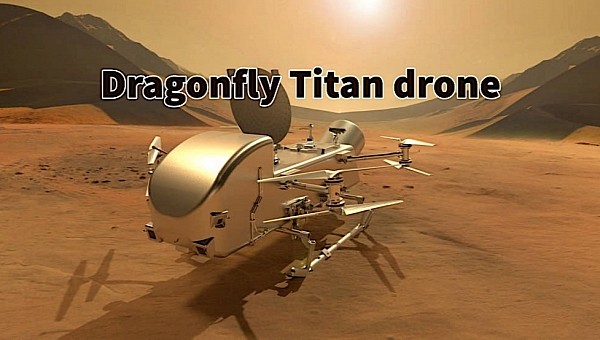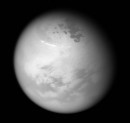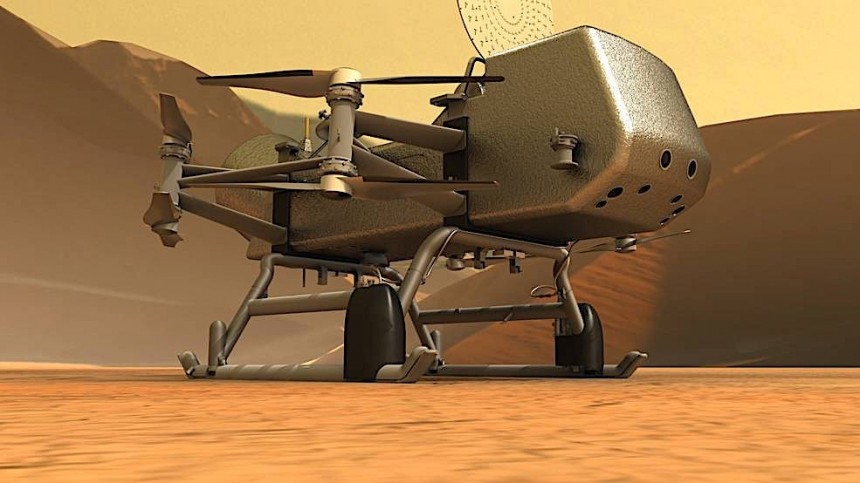The European Cassini spacecraft approached the second-largest planet in the solar system, Saturn, back in 2005, with the goal of studying it. Besides looking at the gas giant from up close, it also dropped a probe on one of its 80-plus moons, Titan.
The probe is called Huygens. And it became the first piece of human hardware to rest on the surface of an object located in the outer solar system, but it certainly won’t be the last.
Titan is of particular interest to us because it is “one of the most hospitable worlds in the solar system.” It has a nitrogen atmosphere dense enough to allow walking without a pressure suit, and gravity levels similar to those on the Moon. On the other hand, you can’t breathe on Titan, and it’s incredibly cold, minus 290 degrees F (minus 179 C).
Most importantly, though, Titan is the only place in the solar system, other than Earth itself, to come with liquids on the surface in the form of rivers, lakes, and seas. Sure, they do not contain water, but stuff like methane and ethane, but the place remains interesting enough for the American space agency to plan a major mission there.
Dragonfly is what the mission is called, and it’s scheduled to take off in 2027. It will travel for eight years, reaching Titan halfway through the next decade to begin a survey of the place, Ingenuity-style.
Ingenuity is that small helicopter NASA now has flying on Mars. It’s a piece of tech that not only proved sustained, powered flight is possible on alien worlds with an atmosphere, but also opened the doors for similar pieces of tech like the Dragonfly.
An octocopter by design (or dual-quadcopter, as NASA likes calling it), the Dragonfly looks more like one of the drones we use on our planet than it does an actual space-faring machine.
The exact details of the design are not yet known, but we do know it will be powered by a nuclear reactor, just like the Curiosity and Perseverance Martian rovers, and it will study Titan’s chemistry in short hops.
What that means is it will land on Titan’s Shangri-La dune fields, and then will repeatedly take off and land to look at other regions of the moon, reaching, at the end of these hops, a distance of 108 miles (175 km) from where it departed.
In space exploration tech terms, the year of Dragonfly’s departure (2027) is not that far off, so people are working hard on the drone. The last update we got on the subject was last week, when we learned of the Dragonfly design passing the Preliminary Design Review (PDR) with flying colors earlier this month.
The PDR is something all NASA pieces of hardware have to go through and covers everything from spacecraft design to cost and risk. Taking these major steps does not mean the bureaucratic hurdles are over, though with more such reviews planned for later this year.
More importantly, the Dragonfly will soon start testing in a simulated Titan environment located in Laurel, Maryland, at the Johns Hopkins Applied Physics Laboratory (APL), which is in charge of the project.
Titan is of particular interest to us because it is “one of the most hospitable worlds in the solar system.” It has a nitrogen atmosphere dense enough to allow walking without a pressure suit, and gravity levels similar to those on the Moon. On the other hand, you can’t breathe on Titan, and it’s incredibly cold, minus 290 degrees F (minus 179 C).
Most importantly, though, Titan is the only place in the solar system, other than Earth itself, to come with liquids on the surface in the form of rivers, lakes, and seas. Sure, they do not contain water, but stuff like methane and ethane, but the place remains interesting enough for the American space agency to plan a major mission there.
Dragonfly is what the mission is called, and it’s scheduled to take off in 2027. It will travel for eight years, reaching Titan halfway through the next decade to begin a survey of the place, Ingenuity-style.
An octocopter by design (or dual-quadcopter, as NASA likes calling it), the Dragonfly looks more like one of the drones we use on our planet than it does an actual space-faring machine.
The exact details of the design are not yet known, but we do know it will be powered by a nuclear reactor, just like the Curiosity and Perseverance Martian rovers, and it will study Titan’s chemistry in short hops.
What that means is it will land on Titan’s Shangri-La dune fields, and then will repeatedly take off and land to look at other regions of the moon, reaching, at the end of these hops, a distance of 108 miles (175 km) from where it departed.
The PDR is something all NASA pieces of hardware have to go through and covers everything from spacecraft design to cost and risk. Taking these major steps does not mean the bureaucratic hurdles are over, though with more such reviews planned for later this year.
More importantly, the Dragonfly will soon start testing in a simulated Titan environment located in Laurel, Maryland, at the Johns Hopkins Applied Physics Laboratory (APL), which is in charge of the project.








